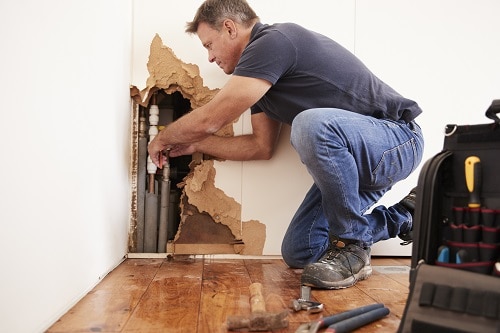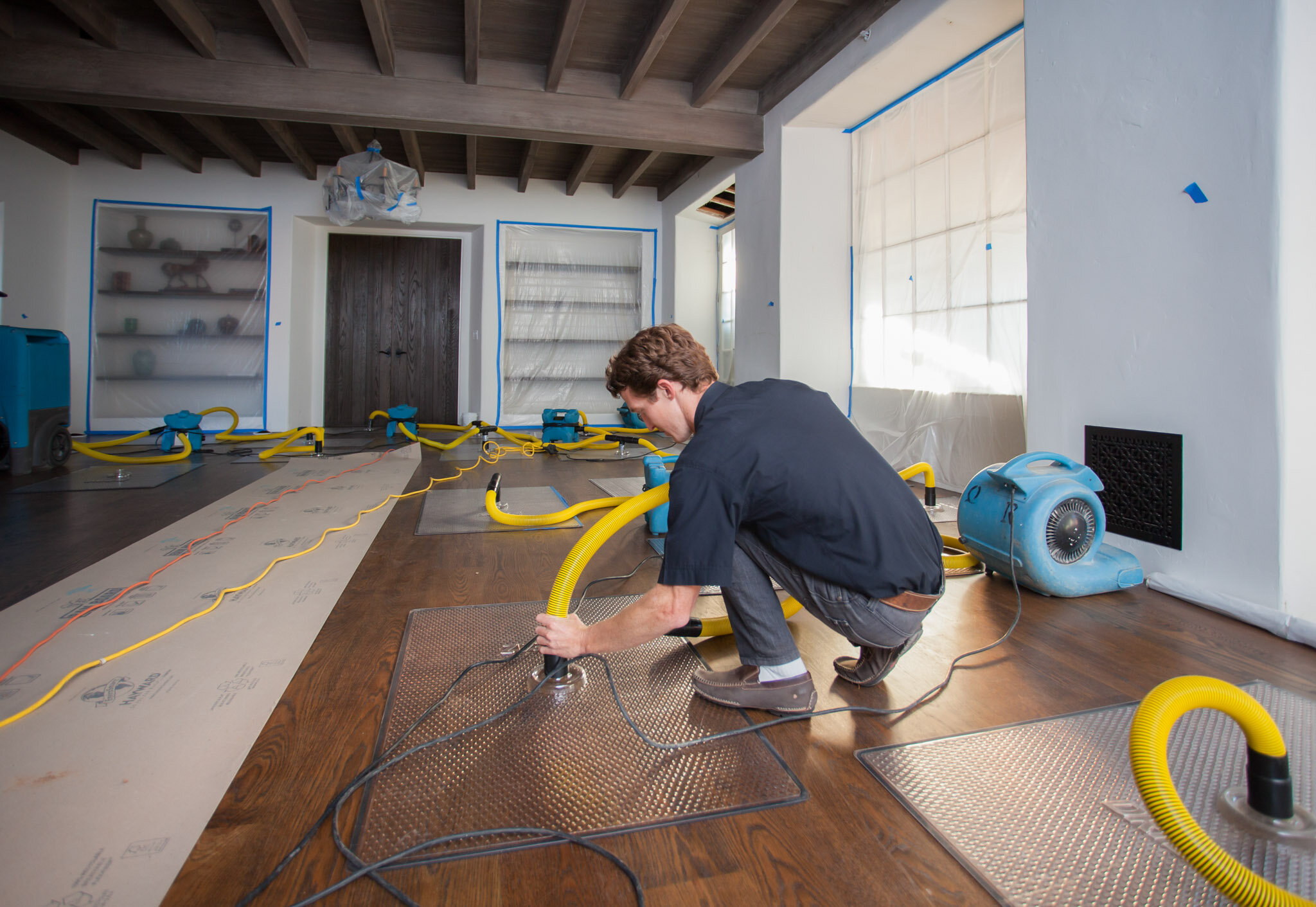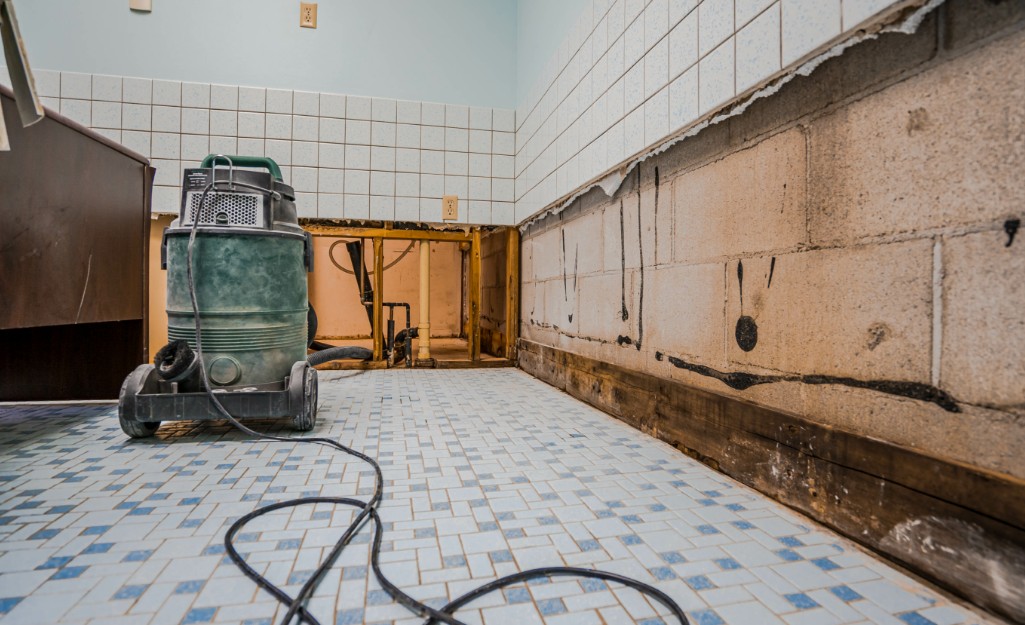How to prepare for Water Damage Restoration at home
Wiki Article
Water Damage Restoration 101: Recognizing the Process and Expense
Water damage can strike all of a sudden, leaving home owners in a state of confusion. Recognizing the reconstruction procedure is necessary for effective healing. From assessing the damage to choosing the right company, each step impacts the total result and cost. Elements such as the sort of water damage and seriousness additionally play a significant function. What are the specific techniques utilized in reconstruction, and how can one prepare for potential expenses?Types of Water Damage
Water damage can arise from various sources, each presenting distinct obstacles for repair. The 3 main kinds of water damage are classified based on contamination degrees: tidy water, grey water, and black water. Tidy water stems from sources like damaged pipes or rain, positioning marginal health dangers. Gray water, which consists of wastewater from sinks or cleaning makers, has impurities that may create pain or health problem if consumed. Black water, the most unsafe classification, comes from sewer or floodwaters, consisting of unsafe bacteria and microorganisms. Each kind demands particular restoration strategies and safety actions to properly attend to the damage and alleviate wellness risks. Understanding these distinctions is vital for property owners and specialists entailed in the water damage remediation process.First Analysis and Examination
A comprehensive preliminary assessment and assessment are crucial action in the water damage restoration process. This phase starts with a specialist assessing the degree of the damage, recognizing the resource of the water invasion, and identifying the sort of water entailed - Flood Cleanup Services. Technicians make use of specialized devices to gauge dampness degrees in various materials, such as wall surfaces, floors, and furnishings. Furthermore, they analyze structural honesty and prospective carcinogen, consisting of mold growth. The searchings for from this assessment educate the restoration plan, directing required activities and source appropriation. Precise documentation of the damage is crucial for insurance cases and future referral. In general, this initial evaluation prepares for reliable reconstruction, making certain a detailed feedback to the details circumstance at hand

Water Extraction Techniques
Following the first analysis, efficient water extraction techniques are used to minimize damage and prevent additional concerns. These strategies involve making use of customized equipment such as completely submersible pumps and industrial-grade vacuum cleaners. The selection of technique depends upon the quantity of water present and the type of materials affected. For standing water, submersible pumps are typically made use of for rapid elimination, while vacuum cleaners are ideal for removing water from carpetings and furniture. Furthermore, progressed approaches like water extraction mats may be utilized for hard-to-reach areas. The goal is to eliminate as much water as possible, lessening the potential for mold development and structural damage. Prompt and reliable water extraction is vital in the overall water damage repair procedure.Drying Out and Dehumidification Process
As soon as the water extraction is complete, the drying and dehumidification procedure ends up being important to bring back the damaged area. This phase generally employs industrial-grade dehumidifiers and air moving companies to effectively decrease wetness levels. The dehumidifiers attract wet air, getting rid of excess humidity, while air movers flow air to accelerate evaporation. Surveillance tools is frequently used to track moisture and temperature degrees, making certain perfect drying out conditions. The duration of this procedure can vary depending upon the level of the water damage and ecological elements. It is vital to thoroughly dry all impacted products, including wall surfaces, floor covering, and furnishings, to stop mold and mildew development and structural damage. Proper implementation of this action is critical for an effective remediation end result.Cleaning Up and Sanitizing Afflicted Locations

First Analysis and Examination
Prior to starting any remediation initiatives, a thorough preliminary assessment and assessment of the influenced areas are essential for efficient cleansing and disinfecting. This procedure entails identifying the degree of water damage, identifying the resource of the water intrusion, and reviewing the materials influenced. Assessors generally look for signs of mold and mildew development, structural integrity issues, and damaged items. The evaluation also includes inspecting moisture degrees using specialized tools to assure no covert water pockets continue to be, as these can result in further problems. Recording the searchings for is necessary for preparing the following action in the restoration procedure. An in-depth preliminary evaluation enables restoration experts to create a targeted approach for effective cleansing and sanitizing, inevitably lessening damage and wellness risks.Cleansing Techniques and Products
Efficient cleaning and disinfecting of water-damaged locations call for a variety of techniques and products customized to the details materials impacted. For permeable surfaces like drywall and carpeting, extraction techniques are vital to remove excess wetness, complied with by deep cleaning with specialized detergents. Non-porous materials such as tile or metal can be cleaned up making use of commercial-grade cleaners that properly get rid of contaminants. Vapor cleaning is an additional effective technique, especially for carpets and furniture, as it uses heats to get rid of microorganisms and mold. Furthermore, environment-friendly items are progressively popular for their safety and security and efficacy. Eventually, picking the appropriate cleansing methods and products not just assures immediate sanitation yet likewise help in stopping more damage and health and wellness dangers connected with water invasion.Sanitization and Disinfection Methods
When addressing water damage, correct sanitization and sanitation techniques are important to assure the security and health of the afflicted setting. After preliminary cleaning, surfaces must be treated with ideal anti-bacterials to remove microorganisms, mold, and microorganisms that thrive in wet problems. Usual methods include the usage of EPA-approved chemical anti-bacterials, which can be used through spraying or wiping methods. In addition, ultraviolet (UV) light systems can effectively disinfect locations by reducing the effects of microorganisms without rough chemicals. The selection of technique usually depends on the type of products impacted and the degree of contamination. Eventually, extensive sanitization not just brings back a risk-free space however also assists prevent future health and wellness risks connected with sticking around dampness and mold and mildew growth.
Repair Services and Restoration Options

Factors Affecting Restoration Costs
The level of water damage straight influences the restoration costs home owners can anticipate to sustain. Aspects such as the resource of the water, the period of direct exposure, and the affected materials substantially affect prices. Clean water damage from a busted pipeline is normally much less pricey to restore contrasted to damage triggered by sewage (Water Damage Restoration). Additionally, the level of contamination dictates the demand for specialized cleaning and disposal solutions, additionally enhancing costs. Geographical area additionally contributes, as regional labor rates and schedule of reconstruction services can differ. The necessity of the feedback impacts costs; quicker interventions normally lead to lower overall costs by avoiding more damage. Comprehending these aspects is crucial for home owners when approximating restoration pricesThe 3 main types view it of water damage are classified based on contamination levels: clean water, grey water, and black water. An extensive preliminary evaluation and evaluation are vital actions in the water damage remediation procedure. For standing water, submersible pumps are normally used for rapid elimination, while vacuums are ideal for removing water from carpets and upholstery. The extent of water damage straight impacts the restoration sets you back house owners can expect to sustain. Clean water damage from a damaged pipe is typically much less costly to restore compared to damage created by sewer.
Report this wiki page